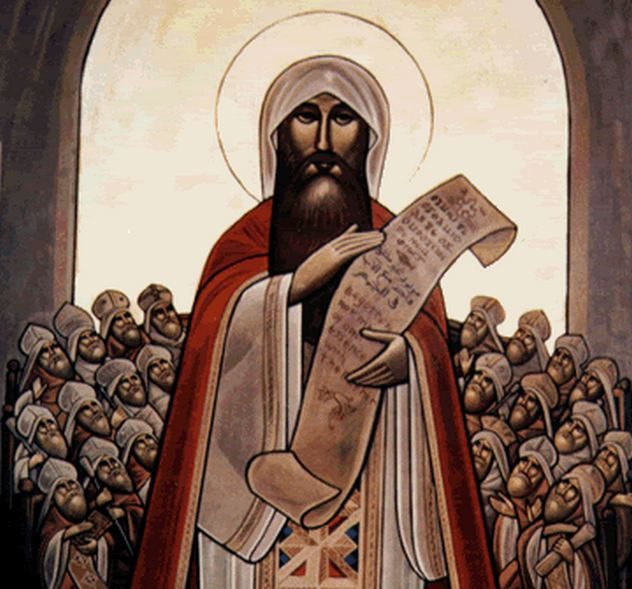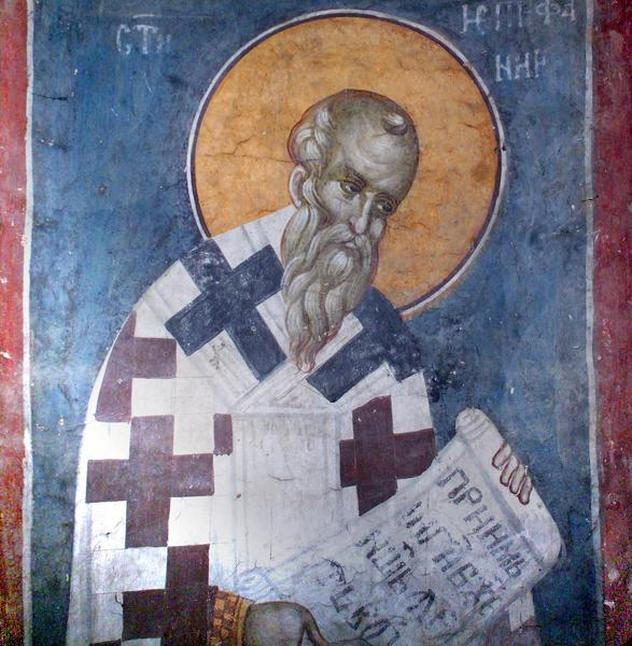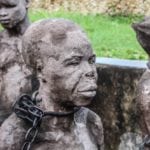 Technology
Technology  Technology
Technology  Humans
Humans 10 Everyday Human Behaviors That Are Actually Survival Instincts
 Animals
Animals 10 Animals That Humiliated and Harmed Historical Leaders
 History
History 10 Most Influential Protests in Modern History
 Creepy
Creepy 10 More Representations of Death from Myth, Legend, and Folktale
 Technology
Technology 10 Scientific Breakthroughs of 2025 That’ll Change Everything
 Our World
Our World 10 Ways Icelandic Culture Makes Other Countries Look Boring
 Misconceptions
Misconceptions 10 Common Misconceptions About the Victorian Era
 Mysteries
Mysteries 10 Strange Unexplained Mysteries of 2025
 Miscellaneous
Miscellaneous 10 of History’s Most Bell-Ringing Finishing Moves
 Technology
Technology Top 10 Everyday Tech Buzzwords That Hide a Darker Past
 Humans
Humans 10 Everyday Human Behaviors That Are Actually Survival Instincts
 Animals
Animals 10 Animals That Humiliated and Harmed Historical Leaders
Who's Behind Listverse?

Jamie Frater
Head Editor
Jamie founded Listverse due to an insatiable desire to share fascinating, obscure, and bizarre facts. He has been a guest speaker on numerous national radio and television stations and is a five time published author.
More About Us History
History 10 Most Influential Protests in Modern History
 Creepy
Creepy 10 More Representations of Death from Myth, Legend, and Folktale
 Technology
Technology 10 Scientific Breakthroughs of 2025 That’ll Change Everything
 Our World
Our World 10 Ways Icelandic Culture Makes Other Countries Look Boring
 Misconceptions
Misconceptions 10 Common Misconceptions About the Victorian Era
 Mysteries
Mysteries 10 Strange Unexplained Mysteries of 2025
 Miscellaneous
Miscellaneous 10 of History’s Most Bell-Ringing Finishing Moves
10 Bizarre Early Christian Sects
In the first two centuries of the Christian era, the New Testament had not yet been finalized and the definitive orthodox statement of belief, the Nicene Creed, was still many years in the future. The Roman world was home to many sects labeled “Christian” that would seem odd and downright weird to us this side of the Council of Nicea. If you think that modern Christian sects are so variegated and confusing, read on—and they will seem staid and tame in comparison to the free-for-all nature of early Christianity.
10Simonians

The Simonians take their name from Simon Magus (the Magician), who makes an appearance in Acts 8:9–24, where he is rebuked by the apostle Peter for seeking to purchase the apostolic office (hence the term “simony” for the practice). According to Bishop Irenaeus of Lyons, Simon is the father of all heretics.
Simon told a story wherein God’s feminine First Thought, called Ennoia, went to the lower worlds to create angels. Unfortunately, the angels rebelled against her and had her imprisoned in the body of a woman. She inhabited such a body through successive reincarnations, one of which was Helen of Troy. God finally descended to Earth as Simon Magus in order to rescue her. Simon found her latest incarnation, also named Helen, working as a prostitute in the city of Tyre. It was while in human form that God/Simon preached against the rebellious angels who created the world.
There are hints in Simon’s writings that he also identified himself as the Christ who suffered in Judea. He taught that people who turn to him and Helen (who was identified as the Holy Spirit) will be saved by grace, not by works. The apocryphal “Acts of Peter” relates that, in a contest with the apostle Peter to prove who is telling the truth, Simon levitates up above the Forum in Rome. Peter then prays to God to pull Simon down, whereupon the heretic is stopped in mid-air and crashes to the ground. Exposed as a con artist, he is stoned by the people and later dies of his injuries.
9Montanists

Montanus founded a movement that, in his time, was called the “New Prophecy.” It was an ancient forerunner of modern Pentecostalism, with its emphasis on ecstatic prophesying and speaking in tongues under possession of the Holy Spirit. Montanus was allegedly once a priest in the pagan cult of Attis and Cybele, which had a tradition of dervish-like behavior among its priestesses. While the movement did not differ much from the beliefs held by the proto-orthodox Catholic Church, there were significant departures from doctrine.
For one, Montanus allowed women prominent positions in the sect, such as bishops, presbyters, and deacons. His two chief prophetesses were Maximilla and Priscilla. While at Pepuza, in Phrygia (Asia Minor), Priscilla claimed that Jesus appeared to her in the form of a woman as she slept and, having laid beside her, “put wisdom into me, and revealed to me that this place is holy, and that here Jerusalem above comes down.” Maximilla foretold that, after her death, the end would come. This news of the imminent Second Coming of Christ (or “Parousia”) spread like wildfire throughout the region, and soon Pepuza was drowned in a sea of devotees. In preparation for the Parousia, Montanus urged asceticism, forbade marriage (later relaxed to only one marriage), and encouraged martyrdom.
At first, the Catholic Church regarded the New Prophecy with some approval. Even the staunch defender of the Church and enemy of heresy, Tertullian, was enthusiastic about how the Holy Spirit was moving among the Montanist community. But later, the Church hierarchy began to note with alarm that the prophecies were going above and beyond the words of Jesus, his apostles, and the proto-orthodox traditions. This prompted the Church to brand Montanism a heresy. Centuries of opposition followed, culminating in A.D. 550, when the Catholics confiscated Montanist church buildings in Pepuza and burned the bones of Montanus, Maximilla, and Priscilla.
8Marcionites

The Marcionites were followers of Marcion of Pontus—a shipowner considered one of the most influential Christians between the time of St. Paul and Origen. He was allegedly expelled from church for “seducing a virgin,” but this accusation may just be part of the demolition job his enemies launched against him. What is known is that he came to Rome and began to teach his doctrines there, attracting a big following and threatening the very existence of the infant Roman Church. Bishop Polycarp of Smyrna called him the “firstborn of Satan.”
Marcion rejected the Jewish God Yahweh as an evil, tyrannical deity, teaching that the God spoken of in the Hebrew Scriptures was not the loving Father of Jesus Christ. Obviously, he rejected the Jewish writings (what would become the Old Testament) as well, and compiled a new canon of holy books, one that is distinctly Christian. For this purpose he produced a “Gospel of the Lord” (an early version of Luke’s Gospel) and collected the epistles of Paul, thus introducing the idea of a “New” Testament.
Marcion considered Paul as the only apostle to truly understand Jesus’s message. The original 12, including Peter, he regarded as dense idiots. Marcion forbade marriage and urged celibacy of his followers (even those married), since bringing more children into the world meant bringing more people into captivity to the despotic Yahweh. Marcion was also a docetist, he believed Jesus never truly was a flesh-and-blood human being, but merely pretended to be one.
7Carpocratians

While the Marcionites practiced extreme celibacy, the sect led by Carpocrates was accused of the opposite—extreme libertinism. The Carpocratians believed in reincarnation, and Bishop Iranaeus of Lyons said that members of the group were encouraged to experience everything there is in life, so they would not have to reincarnate to experience what they had missed out on, and that includes immorality. Irenaeus may be exaggerating, but Carpocratians did indeed pride themselves on being above any moral laws, having transcended the material realm and human conventions.
The Carpocratians’ notoriety was rekindled in the 20th century with the discovery of the Secret Gospel of Mark, a purported more spiritual version of the canonical Gospel of Mark. It was mentioned by Clement of Alexandria, who accused the Carpocratians of falsifying it to support their libertinism. The Secret Gospel turned out to include a scene in which a naked Jesus gives instructions to another naked man, and this hint of a homosexual encounter was used by the Carpocratians to justify a gay lifestyle to a society far less tolerant than ours.
6Marcosians

The sect, led by the teacher Marcus, is known for its fascination with numerology and letter theory. This theory of numbers was derived from the Pythagoreans. Marcosians found significance in the numerical equivalents of words (in Greek, every letter has a numerical value). For example, the name “Jesus” in Greek—IESOUS—corresponds to the numerical equivalent of 888, a number considered by ancients as sacred and magical. One reason for this is that the numbers associated with all 24 Greek letters, when added up, equal 888.
The Marcosians also used numerology to explain the account of Jesus’s baptism in Mark 1:11 as the moment when full divinity entered into him. They added up the letters of the Greek word for “dove,” which comes to 801. This happens to be the number of God, the Alpha and Omega, since Alpha equals 1 and Omega is 800. Marcus also taught of 30 divine beings, called Aeons, derived from the fact that 1+2+3+4+5+7+8 = 30, with the “6” omitted, because it is not a letter of the usual Greek alphabet (“8” represents the “Ogdoad,” the eight primary Aeons).
5Valentinians

Valentinus was a very popular and influential teacher, having once narrowly missed being elected Bishop of Rome (the guy we call “Pope” today). After losing (or refusing) the election, he set up his own group. Valentinus believed in an androgynous Primal Being, its male aspect called Depth, and its female aspect Silence, from which pairs of other beings emanated. Fifteen pairs were eventually formed, totaling 30—the Aeons described by Marcus, who was a disciple of Valentinus. The last Aeon, Sophia, fell into ignorance and was separated from her consort, and this resulted in the material creation and all its evils. She was divided into two: Her higher part returned to her consort, while her lower part became trapped in this physical world.
The whole Valentinian concept of salvation lay in the rescue of Sophia by the Son, or Savior, in whom all the Aeons are integrated. Sophia had brought forth spiritual seeds in her image, but they too, were in ignorance. To awaken and mature the seeds, the lower Sophia and the Savior influenced the Demiurge (Craftsman, or Creator), a lower deity, to create the material world and human beings. This Demiurge is no other than the Biblical God of the Jews. Pretty weird stuff coming from someone who nearly became Pope.
4Basilideans

The followers of Basilides of Alexandria were said by Irenaeus to be dualists and emanationists. That is, they viewed matter and spirit as hostile, opposing forces, and subscribed to the usual Gnostic myth of Aeons emanating in succession from an Unbegotten Father. The five principal Aeons were Nous (Mind), Logos (Word), Phronesis (Intelligence, or Prudence), Sophia (Wisdom), and Dynamis (Power). From Sophia and Dynamis emanated 365 heavens in descending order, collectively called Abrasax. The God of the Hebrews ruled the lowest heaven, and created an illusory world—our own. The True God saw humanity’s suffering in this illusory realm and sent Nous (or Christ) to bring the knowledge (Gnosis) that would free them.
Nous was born as Jesus, whose secret name among the Basilideans was Kavlakav (or Caulacau). Christ, being a totally divine being, had no real physical body. Basilides is perhaps best known for his interpretation of the crucifixion. Christ, being incorporeal, could not die. On the way to the crucifixion site at Golgotha, he performed a switch—he turned Simon of Cyrene, who was helping to carry the cross, into a likeness of himself, and vice versa. The Romans, completely fooled, proceeded to crucify the poor Simon. All the while, Jesus stood aside, laughing at the trick. This notion survives to this day, in the pages of the Muslim Quran: “They said ‘We killed Messiah Isa (Jesus), son of Maryam (Mary), the Messenger of Allah,’ but they killed him not, nor crucified him, but the resemblance of Isa was put over another man.” (Quran 4:157).
3Ophites

The Ophites are named after the word for “snake,” and as you may have guessed, these Christians were snake worshipers. Epiphanius relates that in their Eucharist, they let loose a snake, which slithered among the loaves of bread on the communion table. Their fascination with serpents stemmed from their reading of the account of the Fall in Genesis. To them, the serpent who tempted Eve is not the villain in the story, but the hero.
The Creator God of Genesis they called Ialdabaoth (Son of Chaos), who wanted to tyrannize over Adam and Eve by withholding from them the tree of knowledge of good and evil, the source of wisdom. Ialdabaoth was actually the son of Sophia. He was ignorant of a higher divine realm above him, and so arrogantly proclaimed himself the only God. The serpent was used by his mother Sophia to thwart his illusions of grandeur by inviting Eve to eat of the forbidden fruit. Thus, Moses himself exalted the serpent in the desert, and Jesus compared himself to that serpent.
2Sethians

The Sethians were so called because they revered Seth, the third son of Adam and Eve, as a revealer of knowledge. They considered themselves the “seed of Seth,” that part of humanity which had attained Gnosis (knowledge) and would thus be saved, as opposed to the rest of mankind, the offspring of Cain and Abel. Christ and Seth were one and the same revealer. Sethians are known for their most noted work, the Apocryphon (or “Secret Book”) of John. In it we read the most complete expression of the Gnostic worldview. It begins with the ineffable and unknowable Primal Father, from whom the first power, Thought (also called “Barbelo”) emanated.
This feminine figure played such an important role in Sethian myth that the sect was also known as Barbeloites. A further process of emanation from Barbelo produced Autogenes (Self-Begotten) and angels, including Adamas, the Perfect Man. The youngest emanation, Sophia, desired to bring forth a likeness of herself without the consent of the invisible Spirit. She instead produced a deformed being, Yaldabaoth, who became the Demiurge—the Creator God of the Bible. Yaldabaoth, in turn, produced Archons, who made the first human, Adam. The Archons saw that Adam was superior to them in intelligence, so they contrived to hide from him the Tree of Knowledge in the Garden of Eden. When Adam and Eve disobeyed the Archons, they were cast out of Paradise. Yaldabaoth then seduced Eve, and she gave birth to Cain and Abel.
1Phibionites

The only account we have of the practices of the Phibionites (also called Borborites) comes from the writings of heresy hunter Epiphanius. We should be aware of the possible exaggerations and outright calumny in his biased account. True, partly true, or false, his account is nevertheless intriguing and interesting, not to say scandalous. Epiphanius relates that, as a young man in Egypt, two attractive Phibionite girls once attempted to convert (make that “seduce”) him into joining their sect. He rejected their advances, but went on to familiarize himself with their writings. Epiphanius claims knowledge of their rituals and all is lurid details.
He says that Phibionite feasts begin with the men shaking hands with the women, while secretly tickling their palms underneath. This may be a secret code to alert members to the presence of outsiders, or an erotic gesture. After dining, married couples begin to have sex, each with another member. The man, however, has to withdraw before climax, so that he and his partner can collect the semen and ingest it together, saying, “This is the body of Christ.” Leaders of the sect who have already reached perfection can perform the rite with a member of the same sex. There is also sacred masturbation, where one can take the body of Christ in the privacy of one’s room.
The reason for this sex ritual? The Phibionites believed this world is separated from the divine realm by 365 heavens. So to reach the highest world, a Phibionite redeemed must pass through all 365 heavens—twice. But each heaven is guarded by an Archon, and to be granted safe passage, a Phibionite must call out the secret name of one of the Archons, while doing the sex act. This belief guarantees every Phibionite male sex with a female member at least 730 times. The sex liturgy was also founded on the idea that humans have the divine seed trapped within the physical body, which must be liberated in order to return to the higher realms. This seed is passed on through the male semen and female blood. To allow the seed to develop in the woman’s womb into another human being is to perpetuate the cycle of entrapment. Thus, the ritual collects semen and menses, and their ingestion represents the liberation of the divine seed.
I’m a history buff and chess addict. My book “The Chess Workout” is available at Amazon.com.








